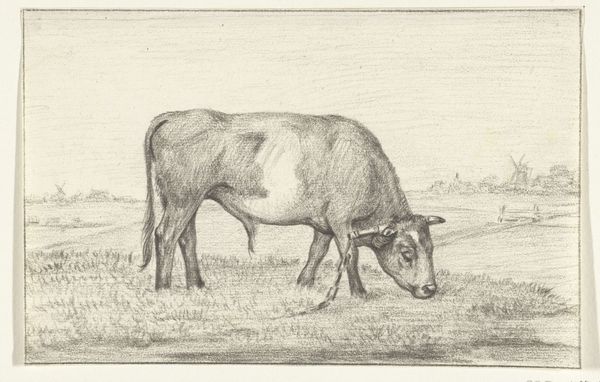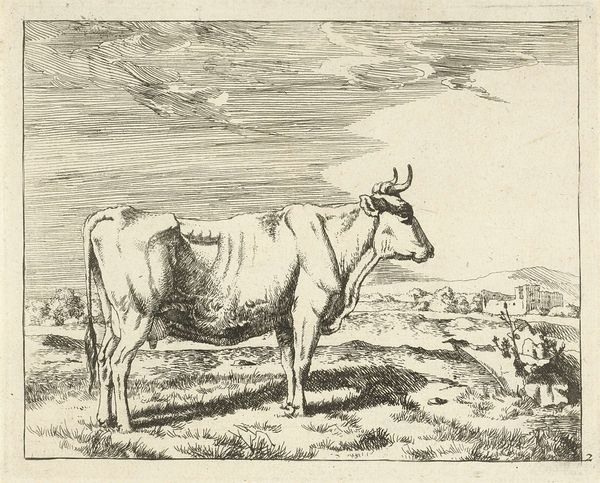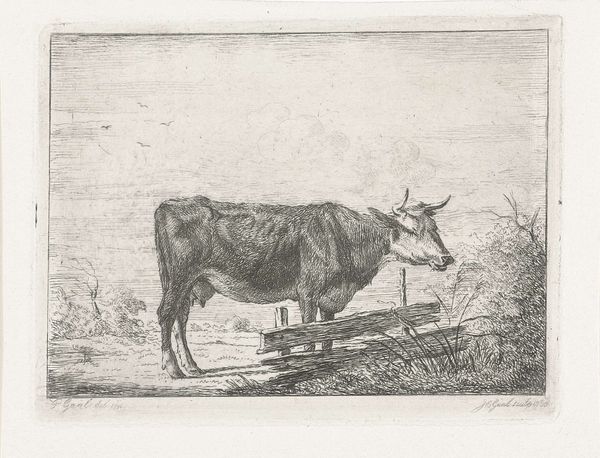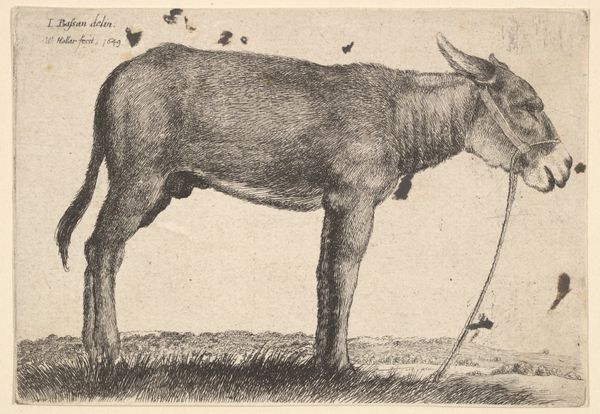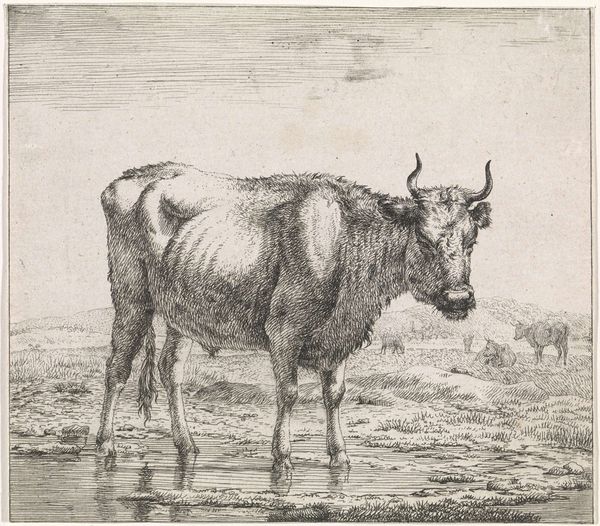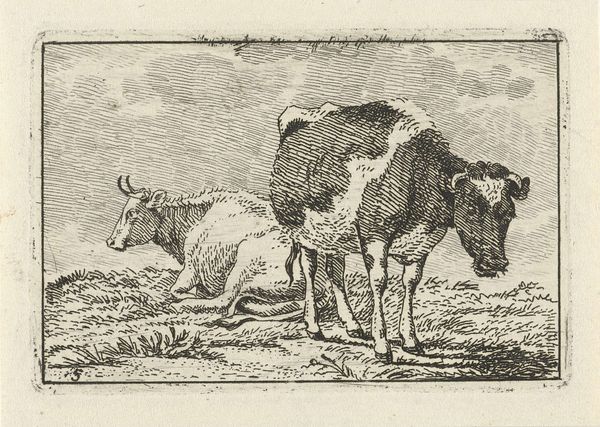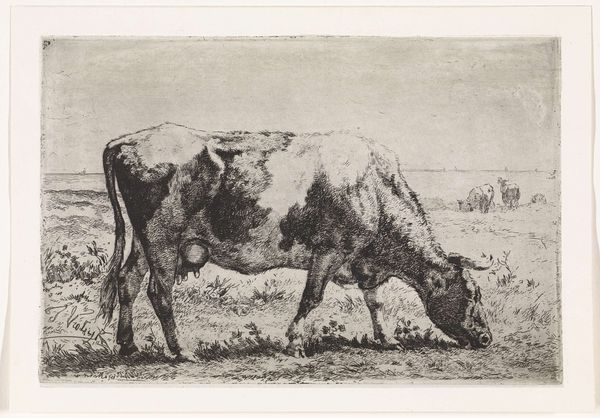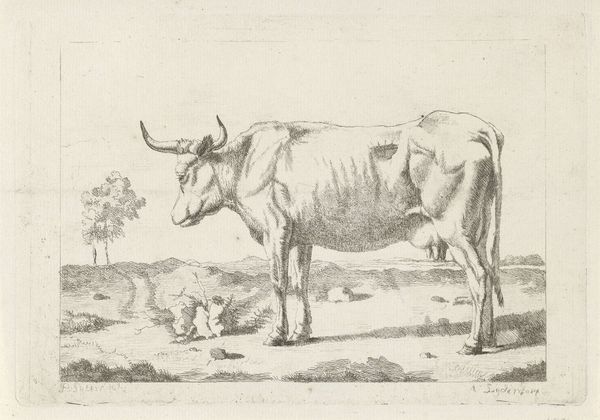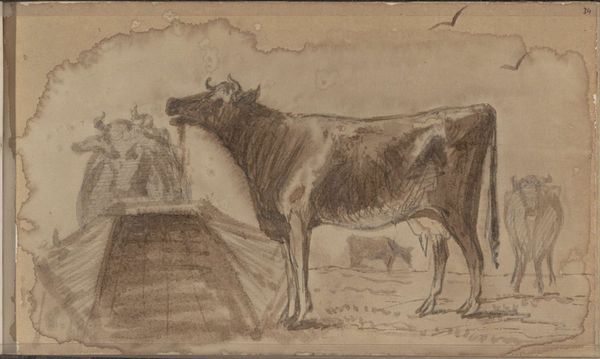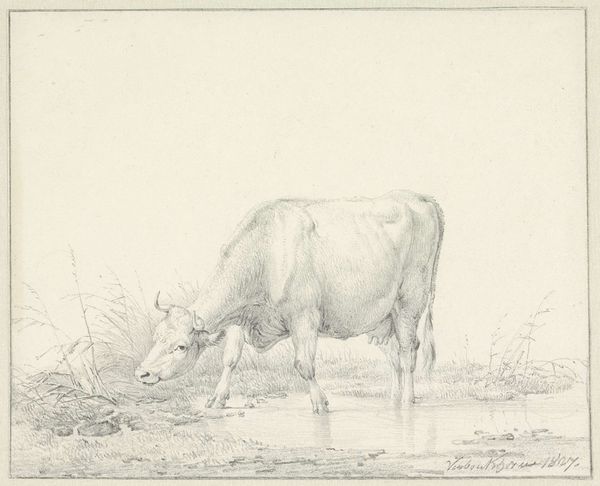
drawing, graphite
#
drawing
#
pen sketch
#
landscape
#
figuration
#
romanticism
#
graphite
#
realism
Dimensions: height 100 mm, width 126 mm
Copyright: Rijks Museum: Open Domain
Editor: This pen and graphite sketch, "Schaap naar links," by Wouter Johannes van Troostwijk, dates back to between 1792 and 1810 and is currently held at the Rijksmuseum. The way the sheep is rendered, almost lost in the vastness of the landscape, gives it such a peaceful mood. What's your take on it? Curator: The sheep here acts as a symbol. Consider the broader social context: late 18th-century Holland, amidst political and economic shifts. Rural imagery gained traction, not just as aesthetic appreciation, but also reflecting societal values, namely ideas about 'national character' which often meant rural labor. Editor: So the sheep represents…Holland? Curator: Not exactly. Think of how livestock were being represented and consumed at that time. Van Troostwijk is very likely capturing, through this animal, the spirit of idealized, pre-industrial labor. The very act of sketching, rather than a formal portrait, signals a shift. Note the quick, assured lines: what does that say about the market for art during this period? Editor: Hmm, like art was becoming more accessible? And quick sketches catered to a different kind of buyer? Curator: Precisely. The piece operates within, and perhaps even anticipates, the evolving socio-economic structure surrounding the production and reception of art. Its meaning isn't simply "sheep in a field". It tells us how art reflects a period. Editor: I never would have thought about it that way. Seeing the connection between art and wider changes in society gives it new dimension. Thank you! Curator: Indeed, examining this connection illuminates much of our understanding. It is the politics of imagery, after all.
Comments
No comments
Be the first to comment and join the conversation on the ultimate creative platform.
